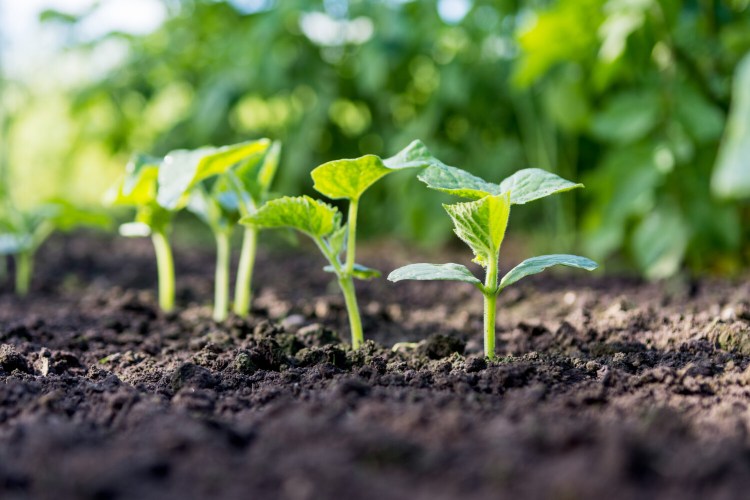Spring is a rush for gardeners: There are spring cleanups for the perennial borders, annuals to be planted in the ground and in planters and window boxes, cemetery arrangements, patio decorations, and, of course, planting the vegetable garden.
Summer, which began on Saturday, is the time to enjoy the fruits (literally and figuratively) of those spring labors. Pick the strawberries and peas and, later, tomatoes and cucumbers. Enjoy the flowers, cutting a few to bring inside.
But this year is different. First, and this is beginning to sound trite, more of us are stuck at home looking for things to do. Almost as important, the weather has been mean.
The traditional date for putting out tender seedlings such as tomatoes, peppers and cucumbers is Memorial Day, May 25 this year. Some people who did that got a shock, with unusually cold temperatures the weekend of May 31. Some contacted me, including one in usually warm Cape Elizabeth, who had their tomato seedlings killed by the cold. Maine farmers also reported some crop losses from two frosts.
In addition, except for a few scattered thundershowers, rain has been scarce since about May 15. It hasn’t been hot, not mostly anyway, but it has been dry. If you haven’t watered, your crops are certainly suffering.
The good news is that it is not too late to plant vegetables. Farm stands, nurseries and farmers markets will still have seedlings to replace the ones that have been damaged or for new areas you want to plant. Don’t be tempted by seedlings that have small fruit on them, thinking you will get a head start. Those plants have been growing in pots too long and are tired. Smaller seedlings will suffer less from transplanting and do better over time.
With the soil finally fully warms, and with you watering when there hasn’t been about an inch of rain each week, you will be surprised how quickly your plants catch up to the ones people planted earlier.
Still, because you are planting late, buy varieties that ripen in the shortest amount of time. The tag of each seedling will say how many days it takes to reach maturity. Add those days to the date you are planting, and if the math takes you much past Labor Day, look for a different variety. Among the quickest, popular varieties of tomato are Early Girl at 50 days and Sun Gold at 55 days.
If you plant seedlings of cucumbers and summer squash now, there is still time for them to produce by Labor Day. It will be difficult to get good winter squash planting this late in the season.
Replacing damaged seedlings is not the only reason to plant now.
Farmers do what is called succession planting, to ensure they’ll have young, tender crops available until the first frost decimates the fields in late September or October.
The easiest crops for succession planting are cold-weather vegetables like lettuce, chard, beets, carrots and radishes. They can be planted in mid-April and first harvested in May or June. After that, the lettuce leaves and beet greens get tougher and the carrots and radishes are no longer the tender, tiny versions many people prefer. These vegetables can be planted every two or three weeks, until early August, which guarantees a steady flow of the prized young, tender vegetables.
Beans are also easy. They like hot weather, and will get established quickly. The ones planted in late May will be pickable and tender in late July or early August, but after a couple of weeks, the beans get tough and overgrown. Put in a crop this week and again in three weeks, and you will have all the beans you want until the first frost.
Peas are trickier. They dislike the hot weather. The exception is a variety called Wando, which handles the heat better than most. If you plant them in the next two or three weeks, you can get a crop of tender peas for September dining.
Cole crops – broccoli, Brussels sprouts and cauliflower – actually taste better if they reach maturity in late September or early October, so now is the perfect time to plant them.
So, here is my advice. Check your property and see if you have some full-sun space that isn’t growing anything important. It can be where earlier plantings failed, beside flowering plants in the perennial border or a place you just haven’t found a use for yet. You could even, as I suggested a few weeks back, get rid of some lawn.
Then plant something you would like to eat. It will brighten up the last days of summer and first days of fall.
Tom Atwell is a freelance writer gardening in Cape Elizabeth. He can be contacted at: tomatwell@me.com.
Send questions/comments to the editors.



Success. Please wait for the page to reload. If the page does not reload within 5 seconds, please refresh the page.
Enter your email and password to access comments.
Hi, to comment on stories you must . This profile is in addition to your subscription and website login.
Already have a commenting profile? .
Invalid username/password.
Please check your email to confirm and complete your registration.
Only subscribers are eligible to post comments. Please subscribe or login first for digital access. Here’s why.
Use the form below to reset your password. When you've submitted your account email, we will send an email with a reset code.